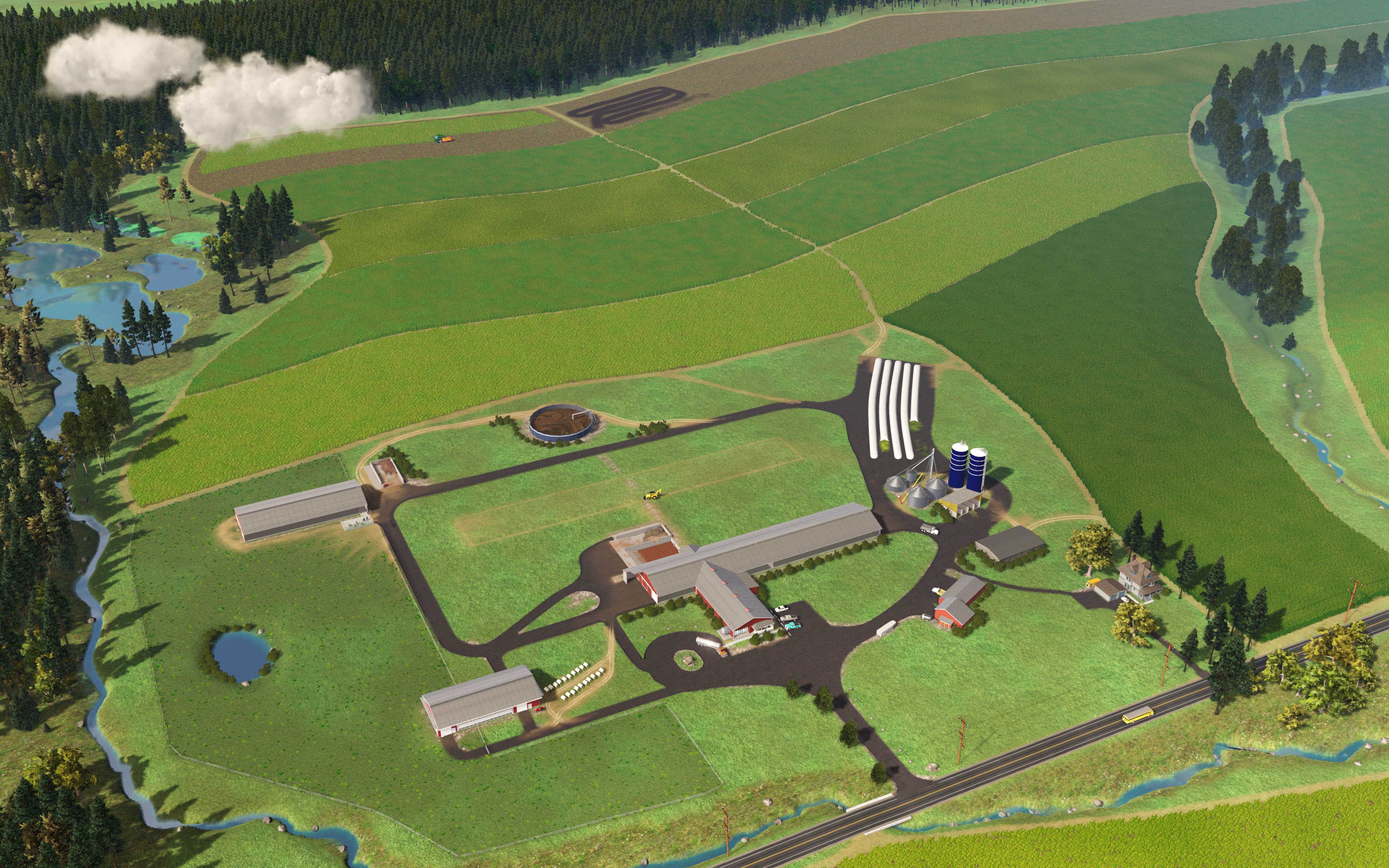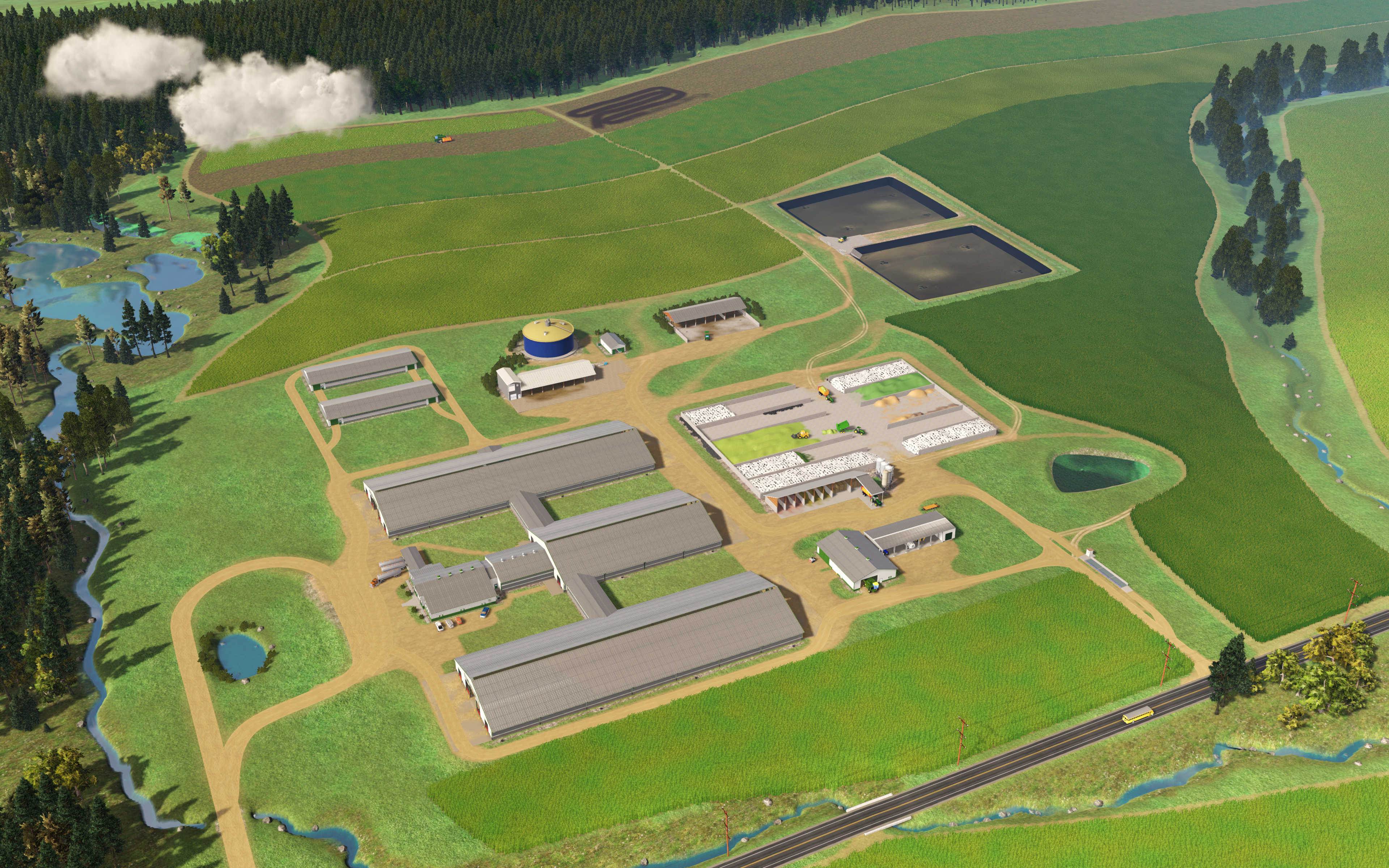- Heifer Barn
- Manure Stacking Area
- Manure Storage
- Silage Bags
- Feed Silos
- Grain Storage Bins
- Commodity Shed
- Machinery Shed
- Farm Shop
- Farm House
- Freestall Barn
- Manure Reception Pit
- Milking Center
- Calf Hutches
- Group Calf Housing
- Manure Land Application
- No-till Planting
- Crop Rotation
- Cover Crops
- Setbacks
- Grassed Waterway
- Vegetative Buffer
- Room to Grow

Welcome to our Virtual Dairy Farm
Here you can explore the systems that make up modern dairy farms in the United States. If you wish, you can go deep into the science that makes modern dairy farming efficient, humane, environmentally conscious, and economically sustainable.
150 Cow Farm
This 150-cow farm represents a common scale for facilities in the Great Lakes region. Demands of the marketplace often favor larger scales to achieve profitability. Many dairies like this 150-cow farm combine a host of features showing how the farmstead has evolved and grown over decades while new management practices are adopted.Total GHG emissions for a modeled 150 cow farm are 1.06 kg CO2-eq/kg FPCM (fat and protein corrected milk), which can range between 0.93 to 1.12 kg CO2-eq/kg FPCM based on different management practices adopted on the farm.For more details on the estimated emissions from the modeled 150 cow farm go to LCA fact sheet and for more information on the modeled management practices go to management practices fact sheet.
- Mortality Composting& Stacking Area
- Commodity Shed
- Silage Leachate & Runoff Pond
- Feed Bunkers
- Feed Silos
- Machinery Shed
- Farm Shop
- Weigh Station
- Freestall Barn
- Milking Center
- Special Needs Barn
- Freestall Barn
- Group Calf Housing
- Solids Separation and Stacking Area
- Digester
- Generator Building
- First Stage Manure Storage
- Second Stage Manure Storage
- Manure Land Application
- No-till Planting
- Crop Rotation
- Cover Crops
- Setbacks
- Grassed Waterway
- Vegetative Buffer

1500 Cow Farm
A 1500-cow farm isn’t simply more of the things that make up the 150-cow farm. Systems change and options multiply as farms grow to take advantage of specialized management, economy of scale, and productivity. You can flip back and forth between the 1500-cow and 150-cow farms to see how features change between the two sizes.
Total GHG emissions for a modeled 1500 cow farm are 0.92 kg CO2-eq/kg milk (corrected to 4% fat and 3.3% protein), which can range between 0.70 to 0.95 kg CO2-eq/kg FPCM based on different management practices adopted on the farm.
For more information on the estimated emissions from the modeled 1500 cow farm go to LCA fact sheet and for more information on the modeled management practices go to management practices fact sheet.

Emission Sources
Crop Production
0.27
Enteric Emissions
0.44
On-Farm Energy
0.04
Manure Emissions
0.551857427839227
Total Emissions
1.30574581437011
Management Decisions

Content for the GHG-Calculator and dairy Fast Fasts was developed by a graduate student team including Joseph Burke, Texas A&M, Anna M. Naranjo, University of California-Davis, Kirby Krogstad, University of Nebraska-Lincoln and their project advisors, Deanne Meyer, University of California-Davis, Richard Koelsch, University of Nebraska, and Luis Rodriguez, University of Illinois. This work was supported by the National Science Foundation, Innovations at the Nexus of Food, Energy and Water Systems Program, under award numbers 1639340 and 1833225.